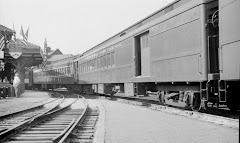


Every year hard working volunteers do there part to try and cleanup a century of neglect in and around Scajaquada creek but why is this area adjacent to the mouth of the creek in the Black Rock Canal always ignored? I'm sure plenty of people would volunteer if the powers at be would make this a priority. The location of this mess makes it very difficult, dangerous and imposable for an effective cleanup by hand . A barge and heavy equipment would most likely have to be used. This is the pile of shit that you see when going to and from the north end of Squaw Island via the International RR Bridge.
Nature Watch / By Gerry Rising
Scajaquada Creek may be down, but don’t count it out
Updated: 09/23/07 5:40 AM
- Alien knotweed and signs of erosion are visible along the banks of Scajaquada Creek in Buffalo.
Originating from several springs in Lancaster and flowing to its outlet at Black Rock on the Niagara River, Scajaquada Creek is about 13 miles long and its entire watershed is only 29 square miles.
The early explorer Robert LaSalle launched his ship, Griffon, here in 1679 and America’s first naval yard was established near the creek’s mouth in 1812 to help build Oliver Hazard Perry’s Lake Erie fleet.
In the 1880s, Frederick Law Olmsted designed Delaware Park on its banks, damming the creek to form “Gala Water,” now renamed Hoyt Lake after the late State Assemblyman William Hoyt.
But the lake’s condition has been almost all downhill from there.
The 1901 Pan-American Exhibition not only disturbed the area but also encouraged Buffalo’s expansion northward. To support this urban extension in the 1920s, a tunnel was constructed which buried four miles of the stream from Pine Ridge Road to the middle of Forest Lawn Cemetery. Along much of its length — including in this tunnel — storm sewers empty sewage overflow into the creek. As one result, another underground section from the edge of the cemetery around Hoyt Lake is badly silted and almost blocked. Another buried section is under the Walden Galleria Mall in Cheektowaga.
Then came the expressway, which not only took up much of the remaining open land but also divided it and reduced the size of Hoyt Lake. A dam was constructed to separate the cleaner waters of Hoyt Lake from the now seriously polluted creek.
As if that wasn’t enough, the Black Rock section of the Erie Canal has raised the water level above that of the river, severely reducing the outflow from the Scajaquada.
Even some of the steps taken to improve the area backfired. For example, the damming of Hoyt Lake began to turn it into a stagnant deoxygenated pond. A well was added to pump fresh spring water into the lake and the problem was solved. Indeed, but this created another problem. The pump reduced the underground aquifer and began to drain Forest Lawn’s lovely Mirror Lake a quarter mile away. Now cemetery staff must purchase citytreated water (run into its property through an ugly fire hose) to maintain the level of that lake.
Today almost 100,000 people live in the Scajaquada Creek watershed, which also includes Buffalo State, Canisius and Villa Maria Colleges, McKinley and Cheektowaga Union High Schools and the Buffalo-Niagara International Airport. Although much of the industry that lined its shores is now gone, those plants left their mark in the stream’s contaminated sediments.
What a mess. A beautiful stream has been turned into a sewer.Yet old Scajaquada ain’t quite dead yet and even shows some signs of recovery. Yes, on our hike, Brooks and I saw many problem areas, but most of our walk was through attractive parklands. We identified wildflowers, birds and insects. Despite the damage wreaked by last year’s October storm, many lovely trees remain. In the water under the shadow of a willow, a snapping turtle showed its head. And Hoyt Lake remains a fitting tribute to a man who was one of the region’s finest politicians.
A single individual is responsible for one major improvement. Jesse Kregal, a tympany player with the Buffalo Philharmonic Orchestra, has been pressing officials for more than a decade to construct a biking and walking trail along the creek from Delaware Park to the Niagara Riverwalk. This month that trail has been completed.
Hundreds of volunteers taking part in the annual Great Lakes Beach Sweep recently took tons of refuse and dozens of shopping carts from along the stream.
Of course more needs to be done, but I was encouraged by a woman we met walking her dog. Seeing us taking pictures of trash in the creek, she asked who we were. When Brooks identified himself and Riverkeeper goals, she announced that she would be his ambassador among her many friends. Me, too.





